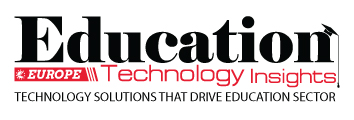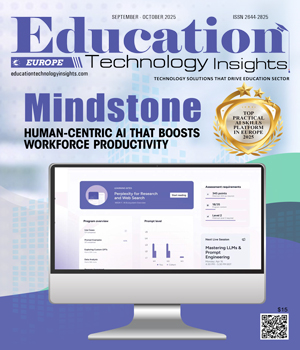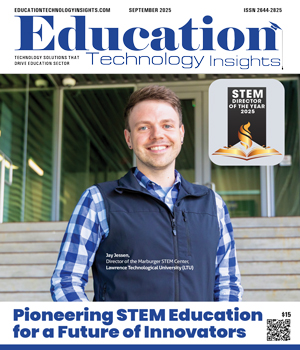THANK YOU FOR SUBSCRIBING
Be first to read the latest tech news, Industry Leader's Insights, and CIO interviews of medium and large enterprises exclusively from Education Technology Insights
Redesigning Assessments for the AI-Driven Classroom
Jean Kotsiovos, PhD, Graduate Professor of Information Technology, Purdue Global
 Jean Kotsiovos, PhD, Graduate Professor of Information Technology, Purdue Global
Jean Kotsiovos, PhD, Graduate Professor of Information Technology, Purdue GlobalOne of my primary concerns as an educator has been the increased use of AI tools by students when completing assessments. This issue affects both traditional and online courses; however, online courses present greater challenges because faculty are not physically present to monitor students during assessments. To protect academic integrity, educators must redesign assessments to minimize the extent to which AI can complete the work on behalf of students.
I allow my students to use AI tools to enhance their learning experience. They can use these tools to clarify complex concepts, brainstorm ideas, conduct research, and improve their writing. However, students must use AI tools ethically and responsibly.
Although AI can be helpful, faculty need to clearly communicate the proper use of AI in the classroom. Including an AI policy in the syllabus is essential. On the first day of each term, I discuss my AI policy, explaining the importance of academic integrity and outlining scenarios where AI tools are allowed and encouraged, such as brainstorming and research. I specify situations where AI use is prohibited, such as high-stakes assessments and projects. I also provide instructions for properly citing AI-generated content and discuss penalties for AI-related academic dishonesty. Presenting this information early in the term helps students understand the expectations.
I face challenges in my courses due to increased AI use in assessments. Some students submit assignment details to an AI chatbot and then turn in the AI-generated responses as their own. This raises ethical concerns regarding cheating and plagiarism.
Are my students truly learning the course material, or are they relying on AI to provide answers? I worry that students are becoming dependent on AI for problem-solving, which may hinder their critical thinking skills. Submitting AI-generated content without proper citation raises serious issues of academic integrity and plagiarism. We should not pass students who cannot demonstrate an understanding of the course outcomes.
For high-stakes assessments, I do not allow students to use AI. It is essential to ensure that students know the course material and can complete the work independently. Faculty must brainstorm alternative assessment approaches that encourage original thinking and deeper engagement with course content—questions AI chatbots cannot easily answer.
“Redesigning assessments is critical in higher education. Faculty need to adapt to minimize students’ misuse of AI tools while ensuring that degrees are awarded only to students who have demonstrated the required knowledge and skills”
AI cannot replicate personal stories or individual perspectives. Moreover, AI may lack access to specific resources such as course materials, videos, and textbooks. Use this to your advantage by designing assessments that require information only available through these resources or that ask for personal experiences.
I have been redesigning my courses and offer some best practices below to help reduce students’ reliance on AI for assessments:
1. Project-Based / Experiential Learning Assessments
• Ask students to solve real-world problems related to course content, either at an organization or workplace, and submit a written or oral report detailing their experience and solutions.
• Involve students in community-based projects or service initiatives, linking their experiences to course outcomes.
2. Interviews or Observations Create assessments requiring students to interview or observe individuals:
• Interview a professional in a relevant field.
• Observe behaviors in a business setting.
• Shadow a professional in a relevant role.
Students then analyze their findings in the context of course concepts.
3. Personal Reflective or Experience-Based Assessments
Since AI cannot replicate personal stories or experiences, ask students to reflect on or apply course concepts to their own lives:
• How does the idea or topic align with their personal values?
4. Oral Presentations
Require students to present projects, case analyses, or reflections live in class or online with follow-up Q&A sessions.
5. Proctored Assessments
For traditional courses, have students complete high-stakes assessments in a classroom or testing center. In online courses, use live online collaboration tools (Zoom, WebEx, Google Meet) to proctor assessments with cameras on.
6. Media-Based Assessments
Have students watch videos and respond to related questions, supporting their answers with specific examples from course materials. This is challenging for AI, which may not have access to these resources.
7. Audio or Video Assessments
Require students to submit audio or video reflections in their own voices rather than written responses. Even if AI tools aid research, students should explain topics in their own words to demonstrate understanding.
8. AI Detection and Proctoring Tools
Use AI detection software like Turnitin and Grammarly to identify potential misuse. Proctor high-stakes assessments with tools like Examity, Respondus LockDown Browser and Monitor, or Honorlock. Respondus LockDown Browser is particularly effective as it prevents students from opening other tabs during assessments.
9. Citations from Class Materials
Require students to support their work by citing course materials, which complicates AI-generated responses.
Redesigning assessments is critical in higher education. Faculty need to adapt to minimize students’ misuse of AI tools while ensuring that degrees are awarded only to students who have demonstrated the required knowledge and skills. Implementing some of the best practices outlined above can help protect academic integrity and support meaningful student learning.
Read Also
Empowering Educators through Purposeful, Connected and Transformative Learning
Empowering Students to Lead: A New Vision for Civic Learning
The Director's Playbook: Strategic Digital Transformation in Rual Hyper-Growth Districts
The Art and Architecture of Student Support
From At-Risk to At-Promise: The Language Revolution Higher Education Needs
Teaching Tomorrow: How Western Governors University Is Redefining Teacher Preparation

I agree We use cookies on this website to enhance your user experience. By clicking any link on this page you are giving your consent for us to set cookies. More info

However, if you would like to share the information in this article, you may use the link below:
www.educationtechnologyinsightseurope.com/cxoinsights/jean-kotsiovos-nid-3245.html





















